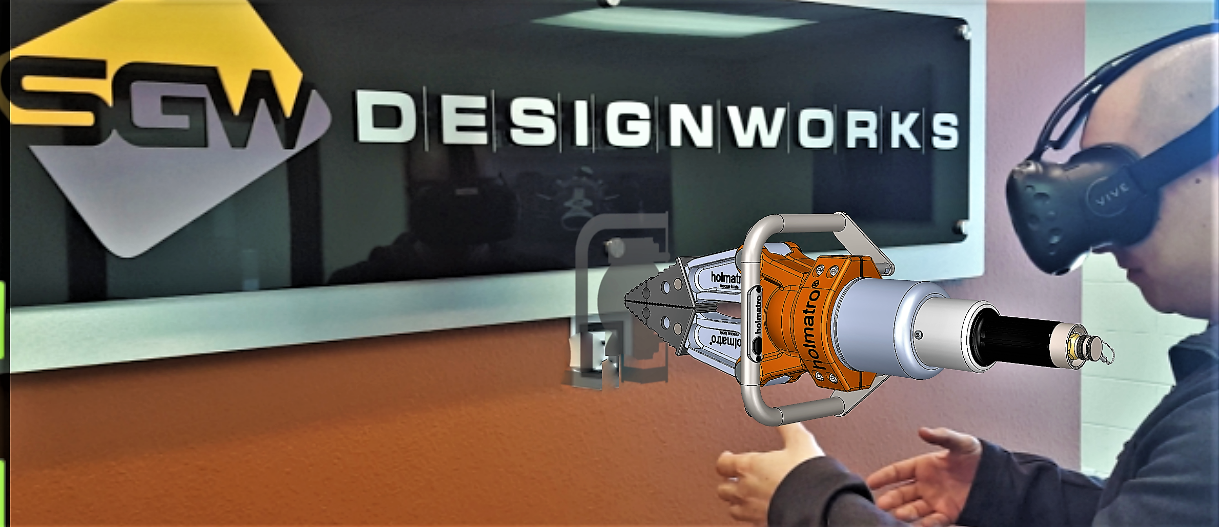
This post was written by Ryan Gray and Ricardo Mejia of SGW Designworks
When you hear Virtual Reality (VR) does gaming come to mind? If so, you are not alone. But the reality of VR, is that there are many other applications to this technology in many industries, not just gaming. From shopping to marketing, training and communication, collaboration and more. Here at SGW Designworks, one of our TOP priorities for our clients, is to deliver on the promise to reduce development risk to their products, and increase the chances of commercial success. So, how does VR help us deliver on that promise? First, we need to talk about the “challenges” product development faced two decades ago.
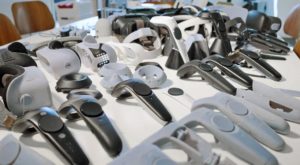
HTC Vive controller at various stages of the development process.
Twenty years ago, hardware development teams would use quantitative inputs from market surveys and financial models to define product feature sets and cost targets. Testing feature/cost trade-offs with actual users during development was difficult and costly, so frequently it would not happen. This meant that often the first real user testing was happening after the business had made major investments in production tooling, as well as engineering optimization for high volume production. Both these had significant costs. Product development felt a lot like gambling in a Vegas VIP suite. Only the wealthy could afford to play (larger businesses in this case). The bets being made (development and tooling investments) had to be made with some degree of gut feel. When somebody made a bad bet, the losses were huge.
In other words, developing a product from concept through to launch was expensive, very time consuming and came with a high-level of risk. Still wondering how VR is helping us fulfill our promise? → Fast forward to five years ago, and things had changed a bit. Technological advances had changed how hardware development works –at least for those businesses willing to embrace new approaches. 3D printers, small CNC machines, and advanced 3D modelling software had all become cost effective enough even for small businesses to embrace. At the same time, books like The Lean Startup by Eric Ries, defined more effective ways to think about product development. The focus had clearly shifted to rapid cycles of learning, or fast development iterations.
The term “Fail Fast / Fail Cheap” became widely used. Frequent validation of features and function during development, rather than at launch was the new norm. Development times and costs trended downward, and development risk did the same. These new philosophies and tools allowed businesses to validate or invalidate assumptions about use case, features, durability, and even production cost in development cycles more like Agile software development than the ‘old way’ of hardware development. The now-ubiquitous “Pivot” became something that hardware startups could live through, as opposed to an instant killer. Hardware development became less risky. This is all thanks to the ability to prototype and test at lower cost and faster than before.
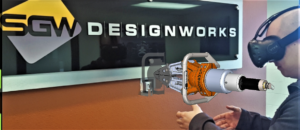
Engineer Rob Regent in a Vive headset working with a prototype.
Today, we use VR technology as the newest design review and testing tool. We call it Virtual Prototyping. The results so far have been hugely positive. A recent client project at SGW Designworks focused on development of a large, complex system used in the air cargo industry. Even today, prototyping such a product is costly. For the first two design iterations, we used Virtual Prototypes in lieu of physical prototypes. In reviewing and “testing” the virtual prototypes using the HTC Vive, we identified design changes in both iterations that we normally would have needed physical prototypes to find. Saving two physical prototype cycles in this case saved the client about $50k in costs, as well as eliminating the lead time for custom assemblies that were too large for 3D printing. In the past month, we have used Virtual Prototypes on three client projects, and each has saved significant hard cost as well as development time. The fact that we can validate or invalidate design decisions faster and for less money means that VR is reducing development risk for our clients.
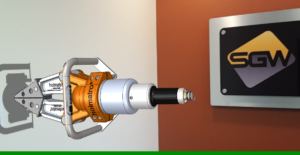
Experimenting with 3D CAD in augmented reality.
We are leveraging VR technology today successfully, and we believe it is only going to get better. As VR continues to be adopted, we envision not only VR design reviews, but interactive VR and AR review capabilities, where multiple individuals can interact in the virtual space, viewing the same design. We also believe that soon, VR applications will start to be used in the design generation process, rather as a review and test tool. In lean manufacturing, businesses look for ways to test products during the process, rather than at the end of the process. This ensures that value is not added to an assembly that is defective. With actual design execution happening in the virtual space, the design changes we now identify in a Virtual Prototype review may be addressed by the engineer during our design process.
In our office, any tool that increases speed, reduces cost, and reduces risk is going to make our clients more successful and that is our promise to all of them. Even as we use it today, VR is accomplishing these things. We are proud to be on the cutting edge of VR as a hardware development tool. We will be working hard to develop different ways to view, test, and manipulate our virtual prototypes as the technology progresses, and the need for faster, lower cost development cycles persists. Check in here periodically to see what is next.
SGW Designworks is a product engineering and development firm based in Boise, Idaho. Founded in 2008, SGW Designworks has helped businesses successfully develop physical products ranging from IoT and cloud connected consumer devices to specialty industrial equipment.

Ryan Gray - Managing Partner

Ricardo Mejia - Marketing Manager

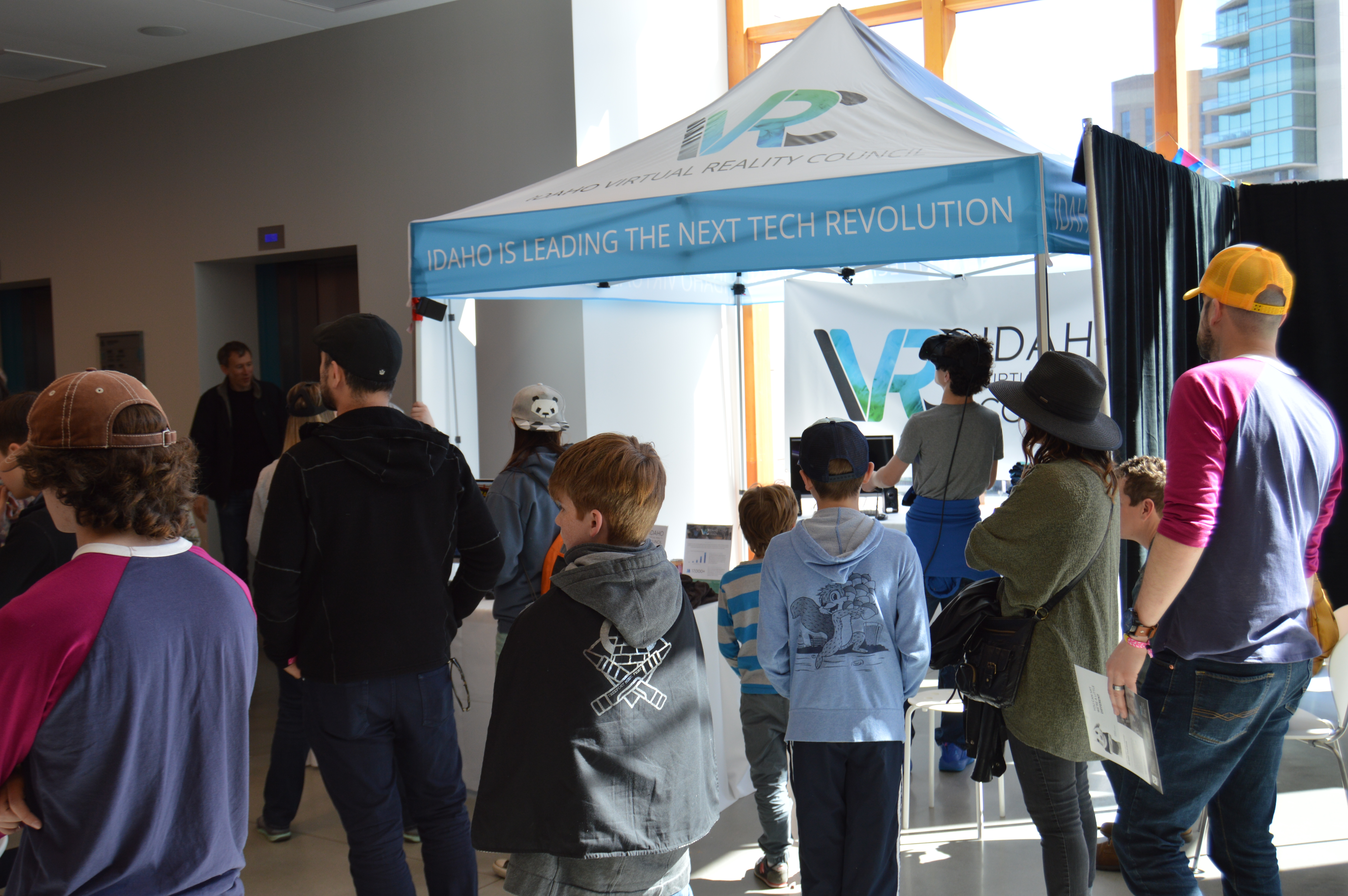

Recent Comments